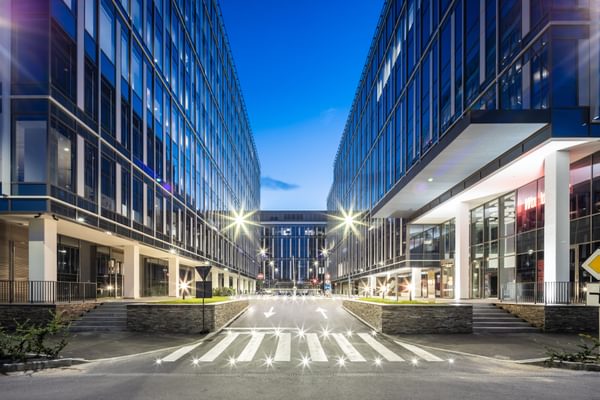Designing for people, places and the planet
We take a “Responsible Design” approach to our projects, considering not just climate change issues, but also the social, economic and ethical dimensions, based on the UN Sustainable Development Goals and principles of exemplary placemaking.
As custodians of the environment for future generations, we work with our clients to help them achieve their Environmental, Social and Governance (ESG) commitments, whilst maximising the benefits from their investments.
At the heart of our work is designing for the well-being of people, places and the planet.
Click to view:
Chapman Taylor's Environmental Policy
Chapman Taylor's Social Value Policy
Chapman Taylor's Governance Policy
Chapman Taylor's ESG Policy Summary
Responsible Design - core principles
Land Use & Ecology
We aim to optimise the potential of sites, looking at densification and efficient planning to ensure we create compact cities while conserving green space to support biodiversity and ecological systems. We recognise the benefits of inviting nature into our urban areas and what it brings to both inhabitants and communities.
Community & Social Value
We add community value to our projects by designing for social and demographic diversity, incorporating a sustainable mix of uses, creating a strong sense of place and working with local businesses to bring employment opportunities and an enhanced urban experience.
Health & Wellbeing
We design for physical and mental well-being; optimising lighting, acoustics and air quality while integrating nature and biophilic design into our buildings. Creating spaces for activity and interaction that support community and inclusion and ensures accessibility for all.
Transport & Connectivity
Our Transportation team is helping to change how we move people and goods, adapting the best existing solutions and anticipating future innovations. Our masterplans prioritise public transport, 15-minute living and active travel for efficient, safe and people-friendly urban environments.
Water
We employ SuDS and Sponge City permeability principles in our proposals, creating wetland landscapes and recreational elements to help mitigate flooding and reconnect people with water. We reduce water waste by re-using grey water for irrigation and washing and specifying efficient fixtures to lower water consumption.
Embodied Carbon
Reducing embodied carbon in our projects is one of the key challenges for the built environment. We aim to refurbish, adapt and repurpose buildings where feasible. By designing lighter structures and carefully reviewing material choices we can lower the carbon footprint of our buildings.
Operational Carbon
We design to reduce energy demands, adopting a fabric-first approach to reduce unwanted losses, using natural ventilation to keep cool and shading to reduce overheating. Environmental modeling software helps us to understand and reduce operational carbon emissions from the earliest project stages.
Lifecycle
Our operational and embodied carbon modelling helps us identify the best ways to reduce lifetime emissions and deliver a truly net zero development. We promote off-site prefabrication, which is highly efficient and minimises waste, and design for low maintenance and future adaptability.



